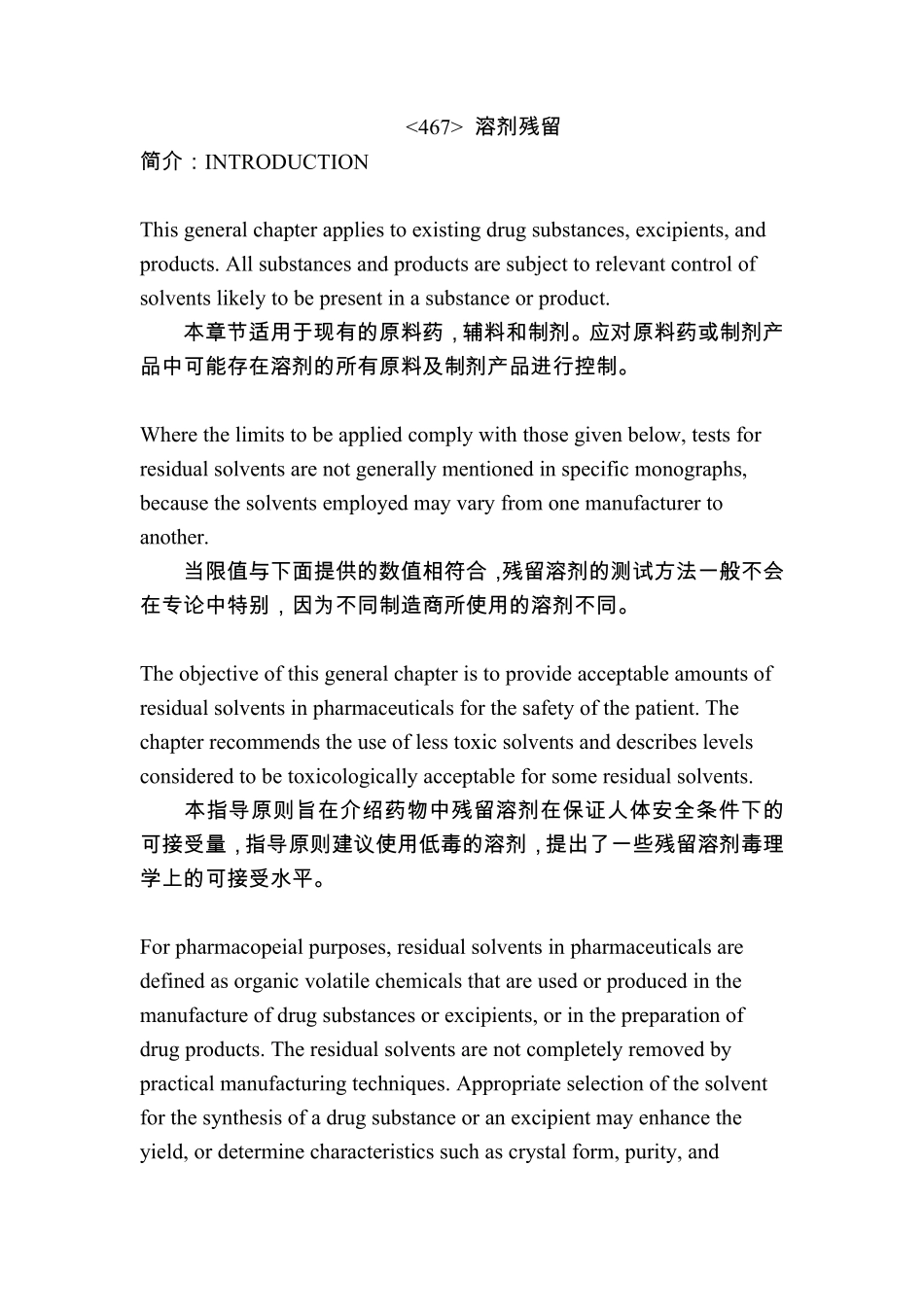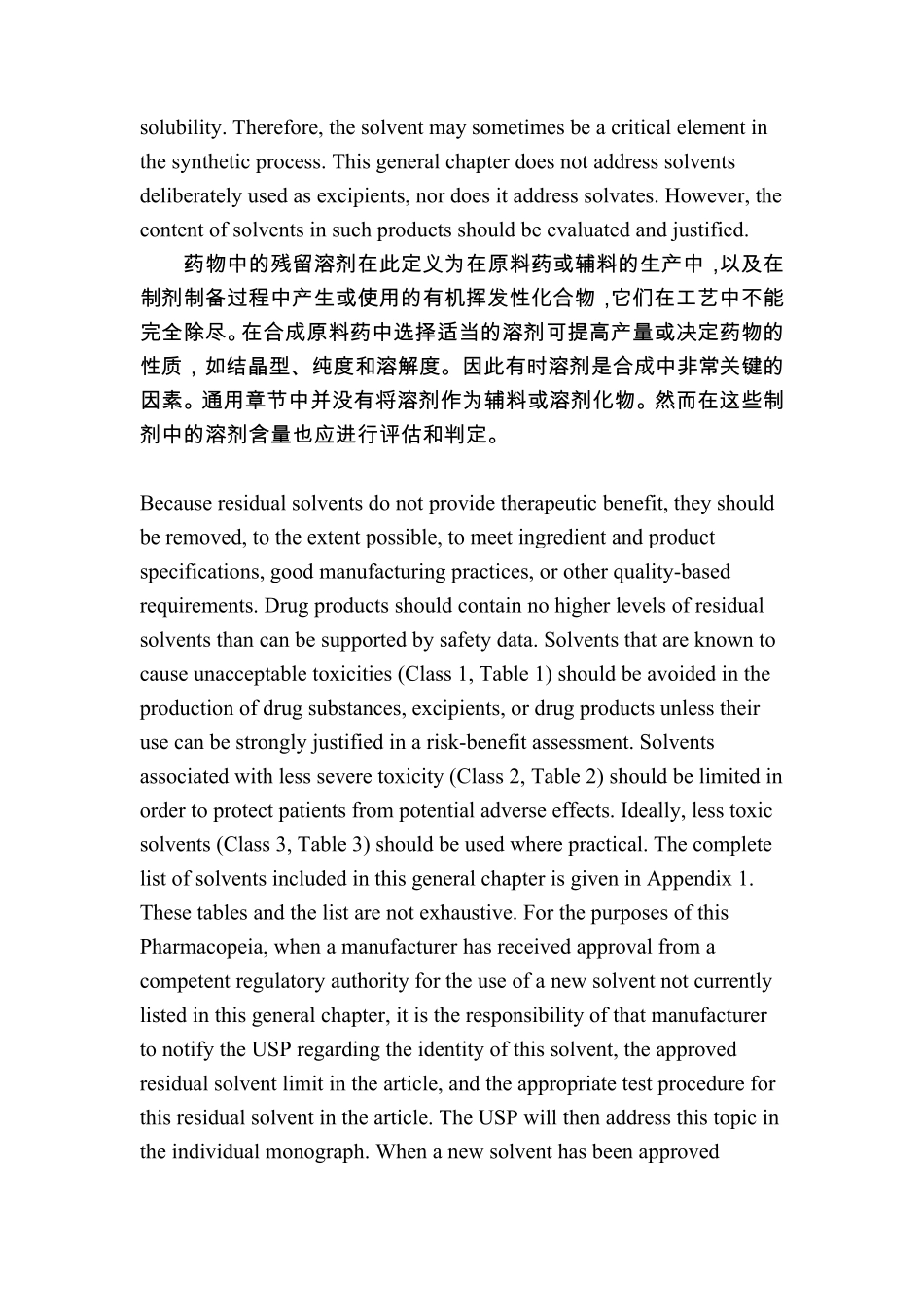<467> 溶 剂 残 留 简 介 : INTRODUCTION This general chapter applies to existing drug substances, excipients, and products. All substances and products are subject to relevant control of solvents likely to be present in a substance or product. 本 章 节 适 用 于 现 有 的 原 料 药 , 辅 料 和 制 剂 。应对原 料 药 或制 剂 产品中可能存在溶 剂 的 所有 原 料 及制 剂 产品进行控制 。 Where the limits to be applied comply with those given below, tests for residual solvents are not generally mentioned in specific monographs, because the solvents employed may vary from one manufacturer to another. 当限值与下面提供的 数值相符合, 残 留 溶 剂 的 测试方法一般不会在专论中特别, 因为不同制 造商所使用 的 溶 剂 不同。 The objective of this general chapter is to provide acceptable amounts of residual solvents in pharmaceuticals for the safety of the patient. The chapter recommends the use of less toxic solvents and describes levels considered to be toxicologically acceptable for some residual solvents. 本 指导原 则旨在介 绍药 物中残 留 溶 剂 在保证人体安全条件下的可接受量, 指导原 则建议使用 低毒的 溶 剂 , 提出了一些残 留 溶 剂 毒理学上的 可接受水平。 For pharmacopeial purposes, residual solvents in pharmaceuticals are defined as organic volatile chemicals that are used or produced in the manufacture of drug substances or excipients, or in the preparation of drug products. The residual solvents are not completely removed by practical manufacturing techniques. Appropriate selection of the solvent for the synthesis of a drug substance or an excipient may enhance the yield, or determine characteristics such as crystal form, purity, and solubility. Therefore, the solvent may sometimes be a critical element in the syntheti...


